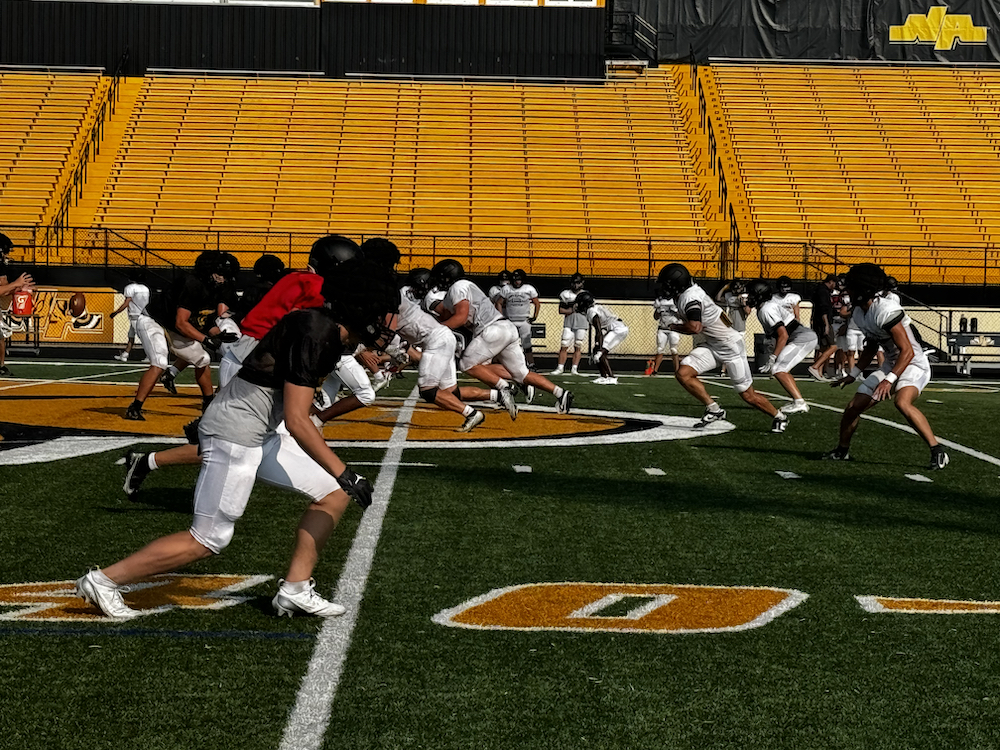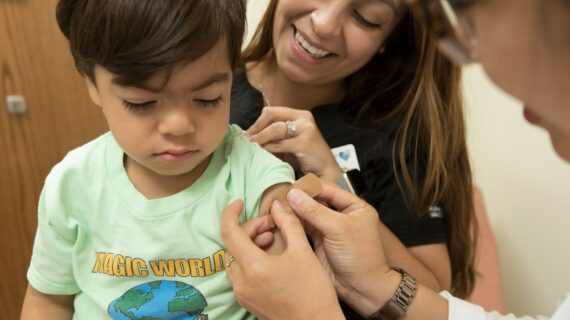
Safety and football helmets: What are local schools doing?
Back in February, I visited KDKA-TVs’ former weatherman, Jon Burnett, after he was diagnosed with suspected CTE (chronic traumatic encephalopathy). CTE is causing neurological problems that affect Burnett’s memory, gait and swallowing. Doctors attribute his condition to the many head blows he took while playing football from age 6 through college at the University of Tennessee.
Many football players encounter these head injuries. But there are efforts to make the game of football safer, starting with the NFL working to make helmets safer and making changes to the game itself.
These efforts are impacting high school football safety, as well. And while football gets the most attention, the recommendations for head safety apply to people who play any contact sport.
Many students enjoy the experience of competitive, contact sports in high school. You can picture the loud cheers, the bright lights, the rivalry between schools: The drama of Friday Night Lights is real, and the players are the stars.
“It’s something you’ll never experience anywhere else — the adrenaline rush you get when people, thousands of people, are yelling and the game’s about to start,” says Jack Yatchenko, a senior at North Allegheny High School.
Senior Dylan Langden adds, “We all come together, and it’s a team chemistry that is a bond that’ll never break for life.”
Football is a contact sport, and sometimes that includes contact with the head.
So I asked Langden: When you hit your head against somebody or another helmet, what are you feeling?
“I’m feeling dizzy,” Langden replied. “Definitely get your bell rung. Don’t know where you’re at half the time when it happens.”
Yatchenko agreed: “Last year, I got hit in the head a couple times during camp,” he said, “and I definitely had some headaches going into the second practice of two-a-days.”
North Allegheny High School Head Coach Art Walker is working to prevent head injuries to his players with Guardian Caps, which cover their helmets during practice — the same protection the NFL players use in practice.
They’re worn mostly by the interior linemen.
“It’s proximity contact, but it’s every single play,” Walker says, “so you want to try to minimize that contact as much as you can.”
Langden explains the difference he feels when he has the Guardian Cap on: “I do notice a difference,” he says. It “definitely helps out a lot. If I do hit my head, I don’t feel it as much. I feel very little.”
North Hills High School also uses Guardian Caps, and all of their players are required to wear them in practice. The PIAA allows players to wear Guardian Caps in games at the discretion of the coaches, players and parents; however, no players at North Allegheny or North Hills High Schools wear them in games, and typically only a couple of players wear them in any high school game.
This year, North Allegheny High School also purchased two of the new helmets offered to NFL players that are designed specifically to protect linemen and are considered even safer than wearing a Guardian Cap.
Yatchenko and Lincoln Hoke, son of former Steeler Chris Hoke, both started wearing them this season and noticed a significant improvement.
Asked how a hit to the head feels with the new helmet, Hoke said: “You can feel a little bit, but not as much with this helmet, so it’s a great helmet. It protects you a lot.”
Yatchenko has had the same experience: “This year,” he said, “I’ve noticed I don’t have any headaches at all.”
Dr. Marco Alcala, a sports medicine doctor specializing in concussions with AHN, says it’s important that athletes strengthen their neck muscles and brace themselves for impact. He doesn’t want the newer helmets and Guardian caps to give anyone a false sense of security.
“It’s not the equipment that’s stopping the concussion because these people, they slam into each other, and they still have a concussion,” Dr. Alcala says. “In the conversations that we have in the offices, (parents will ask) ‘But he had the best helmet possible. How is this possible that he has a concussion?’”
Dr. Alcala’s answer is this: “Because your brain is still shaking and bouncing inside the skull. We don’t have something for that yet.”
Neurosurgeon Dr. Allen Sills, the chief medical officer for the NFL, has advice for parents concerned about their kids’ head safety playing not only football but all sports.
“First and foremost, we want to be in leagues and with coaches that are emphasizing proper technique and again, trying to avoid head contact altogether. Secondly, we want to regulate the amount of contact,” Sills says. “In the NFL, we only have 14 contact practices during the entire seasons. A lot of people are surprised to hear that. Thirdly, it makes sense to have the very best equipment you can have, whether that’s one of the best helmets or the helmet plus the Guardian cap.”
PIAA rules limit full contact practice to three days and no more than 90 minutes a week. AHN Athletic Trainer Eric Cardwell, who works with North Hills High School athletes, says they do their best to keep kids safe.
“We can never eliminate concussions if a student is playing sports,” Cardwell says, “but what we can do is just make sure that we give them all the tools necessary to make sure that they’re safe and prepared every time they go out onto the field.”
Coach Walker agrees: “To me, it’s a great game. It teaches you a lot about life. It’s the ultimate team sport as far as I’m concerned, and the takeaways from it far outweigh anything that’s negative.”
The players do love the thrill of playing.
“This is what they come to see. These stadiums are filled every Friday night. I think people enjoy watching it, and we love playing it, so it’s a great sport,” Yatchenko says.
One of the biggest challenges is that there’s no real understanding of why some people who play contact sports get CTE and other neurological problems from head injuries and why other people don’t.
That’s why Jon Burnett and his family are encouraging anyone who plays contact sports to enroll in the study at the National Sports Brain Bank at the University of Pittsburgh where they’re trying to get more information. You can learn more about how you can help right here.












